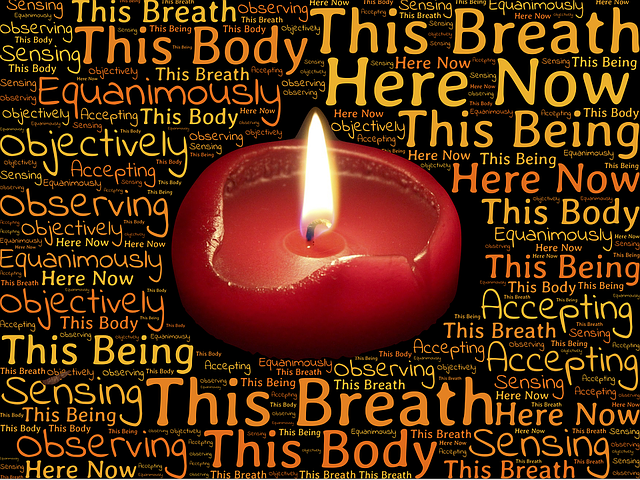Allyson Pimentel, a teacher at the Mindful Awareness Research Centre (MARC), offers a guided meditation podcast on the theme, Mindfulness of the Body and Breath. She explains at the start of the meditation that mindfulness involves paying attention in a particular way that induces ease, restfulness and tranquillity.
Allyson focuses on three elements of paying attention that lead to inner and outer awareness:
- Purposefully – paying attention is undertaken consciously with clear intention and purpose
- Focusing on the present – paying attention to the present moment, not to what has gone before or to an anticipated future event
- Openly – paying attention with curiosity and willingness to be with what is, not ignoring what is unpleasant, painful or challenging.
Allyson reminds us that our breath and our body are always with us in the present moment, even if our mind is continuously wandering with endless thoughts. Our body and breath provide the anchors in the turbulent sea of life.
Allyson cites lines from a poem, “I Go Among the Trees” by Wendell Berry, that capture this stillness:
All my stirring becomes quiet
Around me like circles on water.
My tasks lie in their places
Where I left them, asleep like
cattle…
Guided meditation on your breath and body
The guided meditation provided by Allyson incorporates mindful breathing together with a thorough body scan. After inviting us to sit “upright not uptight”, she encourages us to notice our breathing (its pace, length and evenness). After inviting us to pay attention to our breath, she guides us in a progressive scanning of the body.
Two things that I noticed with the body scan are its completeness and the focus on openness. She guides us to pay attention to our head as well as the rest of our body – top of the head, our forehead, cheeks, eyes, mouth and tongue. While Allyson asks us to release points of tension in our body during the body scan, she also suggests that we notice points of openness once tension has been released.
As we grow in mindfulness through paying attention in the present moment to our body and breath, we can become grounded, release tension in our body and experience the ease of acceptance. We can learn to more skilfully and openly respond to the challenges of the many aspects of our daily life and extend kindness to ourselves and others we encounter. This, in turn, will lead to the experience of equanimity.
____________________________________________
Image by John Hain from Pixabay
By Ron Passfield – Copyright (Creative Commons license, Attribution–Non Commercial–No Derivatives)
Disclosure: If you purchase a product through this site, I may earn a commission which will help to pay for the site, the associated Meetup group and the resources to support the blog.


